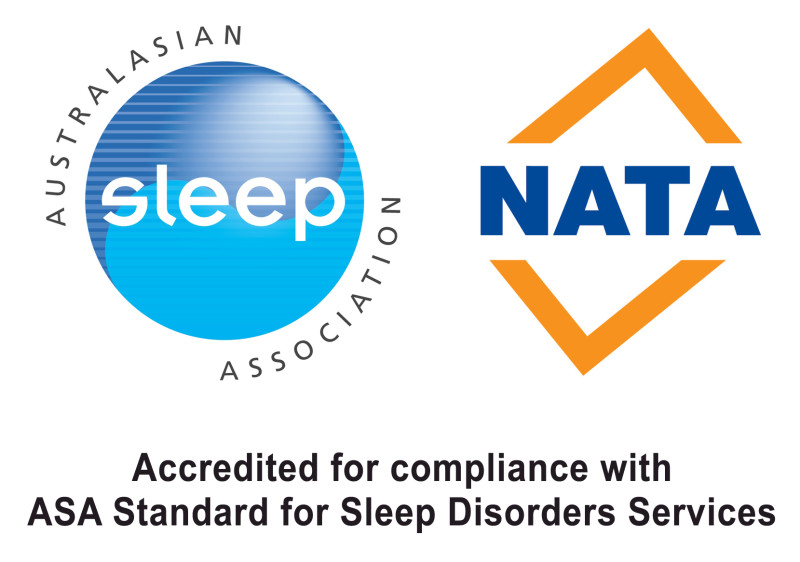
Occupational Health & Sleep
Identifying and controlling “a hazard” is the main process in controlling occupational risk. Ideally, the elimination of this hazard is preferable; however where this is not possible, minimizing the hazard should be enforced.
One of the most riskful hazards in relation to sleep disorders is fatigue. Fatigue can be classed as a hazard and is 4 times more likely to impair workplace performance than alcohol or drug use.
- It increases the risk of an accident
- It puts multiple people in danger of being subjected to harm
- It can cause fatal and non-fatal accidents
- It can be identified
- And IT CAN BE CONTROLLED
IDENTIFYING FATIGUE
Fatigue is a state of mental or physical exhaustion that impairs a person’s ability to function normally. It is more than just feeling tired or drowsy. Most people are well aware of becoming tired after physical or mental effort, but fatigue is worse than simple tiredness or sleepiness. It is brought on by an inability for the body to achieve sufficient amounts of restorative rest (eg. sleep) for whatever reason.
Fatigue can be best described by having either physical weakness in the muscles and lack of physical stamina, or having an inability to concentrate, remember or problem solve efficiently or effectively.
The signs and symptoms of fatigue include:
- blurred vision
- difficulty keeping your eyes open
- head nodding
- drowsy relaxed feeling
- irritability
- not feeling refreshed after sleep (waking tired)
- falling asleep at work
- micro sleeps
WHAT ARE MICROSLEEPS?
Microsleeps are short periods of time (from less than a second to up to 5 seconds) where the brain simply goes to sleep without the person actually being aware of it. Microsleeps happen when someone is particularly sleep deprived, fatigued, or have sustained wakefulness for over 17 hours.
Microsleeps do not necessarilly induce muscle relaxation and can occur even when the eyes are open. Thus, people can often continue performing a mundane, ordinary task (like driving) while they are in a microsleep. The difference is their ability to react to change is completely disabled during this time.
An interesting study in the USA showed that if chronically sleep deprived the study patients slept for up to 13 seconds per minute from microsleeps. That’s over 20% of total driving time spent asleep!
CAUSES OF FATIGUE
It is first important to distinguish between fatigue (exhaustion from an imbalance of activity and rest) and chronic fatigue syndrome (a multi-system medical condition, with a symptom being fatigue). Fatigue can be caused by a varied number of things listed below, however the most influential factor for managing fatigue is the amount and quality of sleep a person achieves.
- Sleep quality
- Sleep time
- Prolonged wakefulness
- Disease or sickness
- Time of day (eg. Shift workers more frequently suffer from fatigue)
- Malnutrition
- Psychological disorders (eg. depression, anxiety)
Workplace fatigue however, often results from a few common causes.
- Overbearing workload
- Long shifts – Sustained wakefulness over 12 hours functioning starts to drop
- Inadequate sleep time – The ‘accepted’ average daily sleep amount per night is 8 hours
- Inadequate sleep quality – Sleep disorders such as obstructive sleep apnoea (OSA) and Periodic limb movement disorders (restless legs syndrome) can dramatically disrupt normal sleep.
Fatigue can also become evident through working shifts. Even though a shift worker may achieve 8 hours of sleep a day, a person’s type of sleep is altered during the day. Sleep during the day does not allow the person to go into a deep, restorative sleep as much as they would at night. Thus it is important that if shift workers allow themselves time off to sleep during the night also.
Shift work can also have a significant effect on circadian rhythms. This can lead to insomnia and cause fatigue.
Good quality sleep is the only effective long-term counter-measure to fatigue. Maintaining sufficient levels of sleep will prevent fatigue.
FOR EMPLOYERS
WHY IS FATIGUE MANAGEMENT SO IMPORTANT?
An American study decided to initiate a sleep apnoea diagnostic and treatment program within a large transportation company. It was found that the company made two to three times more profit for every dollar invested in the sleep apnoea treatment program. Further to this, employee retention was doubled during the course of the program. Drivers treated for sleep apnea had a 73% reduction in accidents, a 91% reduction in hospital admissions, and overall a 57% reduction in healthcare expenses.
This is not an isolated finding. Almost unanimously, studies find productivity is significantly increased once a successful fatigue management plan is initiated. The elimination of sleep disorders like sleep apnoea contributed to higher profits based off less sick leave time for employers, higher retention rates, higher productivity, and less expense on other health management programs.
HOW DO WE KNOW IF OUR DRIVERS ARE COMPLIANT WITH FEDERAL REGULATIONS?
WHAT DO WE RECOMMEND IN AUSTRALIA?
With chronic sleep disorders there are daytime neurobehavioral performance impairments which are more likely when the duration of average sleep is less than 5 hours/night plus those with severe obstructive sleep apnea.
Strategies that should be employed by in Australia to reduce sleepiness, and potentially crash risk, in commercial drivers include plans to –
- develop and implement approaches to identify “impaired” drivers by objective testing,
- implement and ensure quality programs to identify and treat individuals with severe sleep apnea as well as monitor adherence to therapy, and
- introduce approaches to assess and promote increased sleep durations among commercial drivers.
These strategies are in development in Europe and USA, and are our standard service of care with The Thoracic and Sleep Group (QLD).
You have a responsibility to yourself, your workmates, and your employer to ensure you are safe, healthy and informed.
HIGH RISK OCCUPATIONAL SECTORS
SHIFT WORK
Accidents are more likely to occur at night, particularly during the period when the core body temperature is at its lowest point (midnight to dawn) when a person would normally be sleeping. As body temperature drops the general level of alertness drops which impairs concentration and judgment. The risk of a work accident is therefore doubled.
It is strongly recommended that the following be implemented by anyone working shifts.
- Never deprive yourself of sleep in order to ‘work in’ to a night shift schedule. Instead advance your sleep time a day or two before to prepare for the shift.
- Make sure to set up a sleep friendly environment during the day – a dark, quiet room at a comfortable temperature (especially during summer when the days can get quite hot).
- Eat well, including lots of vegetables and fruit. Try to avoid overeating and choosing fatty foods which can start to become craved due to the changes in body metabolism.
- If possible avoid double shifts (shifts over 12 hours). Prolonged wakefulness impairs functioning as much as alcohol intoxication.
MINING INDUSTRY
The mining industry is an extremely high risk industry. In Queensland, the Health and Safety Regulations for the mining industry is enforced under a specific legislation. To read more on mining health and safety see:
In New South Wales, the state government has issues a public action plan geared toward promoting Workplace Health and Safety in the Mining Industry:
The combination of long working hours, physically intense labour, heavy machinery, potential shift work, and working in dark spaces makes this occupation very susceptible to workplace accidents.
Working in places without sunlight (even in offices sheltered from sunlight), impact on levels of alertness. Natural light has the ability to stimulate an area of the brain (the hypothalamus) which helps control our wake-sleep cycle. Halogen, tungsten and fluorescent lights do not have the same effect on the brain as sunlight and therefore, prolonged hours away from daylight can have a dulling affect on mental performance.
PUBLIC TRANSPORT AND DRIVERS
 About one third of all accidents in Australia are caused by tiredness, sleepiness or fatigue. The estimated cost of fatigue related motor-vehicle accidents in Australia is $3 billion.
About one third of all accidents in Australia are caused by tiredness, sleepiness or fatigue. The estimated cost of fatigue related motor-vehicle accidents in Australia is $3 billion.
The most dangerous times to drive are between the hours of 2pm-5pm and 3am-5am. This is due to the core body temperature dropping at these times, causing noticeable increases in sleepiness. The risk of a crash is particularly increased in the early hours of the morning – the sun is not up, the roads are empty (which contrary to common belief increases the risk of a single vehicle accident), and most people are used to being asleep at this time.
In 2007, the National Transport Commission developed and successfully implemented a Fatigue Management Program Reform for Heavy Vehicle Drivers. Details of the Reform can be found at:
TIPS TO AVOID BECOMING DROWSY WHILE DRIVING*:
- Get enough sleep – American Academy of Sleep Medicine recommends adults get seven to eight hours of sleep each night in order to maintain good health and optimum performance.
- Take breaks while driving – If one becomes drowsy while driving, it is recommended he or she pulls off to a rest area and takes a short nap, preferably 15 to 20 minutes in length.
- Do not drink alcohol – Alcohol can further impair a person’s ability to stay awake and make decisions; taking the wheel after having just one glass of alcohol can affect one’s level of fatigue.
- Do not drive late at night – Avoid driving after midnight, which is a natural period of sleepiness.
*Excerpt from the American Academy of Sleep Medicine Drowsy driving Factsheet.
EMERGENCY RESPONSE, DEFENCE FORCE & CONSTRUCTION INDUSTRY
The best approach to combat fatigue is getting good quality, sufficient sleep.
 Be aware of the following methods to help maintain healthy sleep habits
Be aware of the following methods to help maintain healthy sleep habits
- Aim to sleep for 8 hours on average per night
- If working shifts, maintain 8 hours of sleep per day and allow some nights free to recoup on lost quality sleep
- Be aware of any sleep disorders that may be contributing to poor quality sleep – such as sleep apnoea, restless legs syndrome, periodic limb movement disorder or insomnia.
- Maintain a standard level of physical and mental health
- Be aware of your psychological health
Be aware of some of the no-no’s…
- Avoid working shifts longer than 12 hours
- Avoid sustained wakefulness longer than 16-17 hours (ie. avoid double shifts)
- Avoid driving long distances without regular nap breaks
- Avoid driving between the hours of 2am and 5am
- Try to avoid strenuous work within normal sleeping times
- Do not become dependent on caffeine or other stimulants
- Avoid caffeine 6 hours before your scheduled bedtime
While caffeine and other stimulants can improve some symptoms caused by sleep loss or poor quality sleep. They can complicate others, by giving a false sense of security or by making things worse (ie. Motor control and concentration are made worse by caffeine).
For more information on Governmental Legislation relating to fatigue:
16 hours of prolonged wakefulness can impair functioning as much as a blood alcohol level of .05%.
21 hours of prolonged wakefulness can impair functioning as much as a blood alcohol level of .10%.


